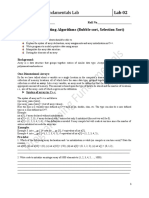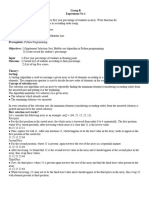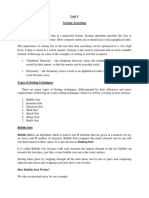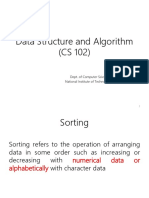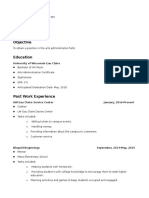0% found this document useful (0 votes)
55 views6 pagesDSA - Lab3 Sorting Techniques1
This document discusses sorting algorithms in C++. It describes bubble sort and selection sort algorithms. For bubble sort, it provides pseudocode for the algorithm and walks through an example. Selection sort is also explained with pseudocode and C++ implementation code is given. The objectives are to understand sorting array operations, write algorithms, and implement them in code.
Uploaded by
51b48265a74f87Copyright
© © All Rights Reserved
We take content rights seriously. If you suspect this is your content, claim it here.
Available Formats
Download as PDF, TXT or read online on Scribd
0% found this document useful (0 votes)
55 views6 pagesDSA - Lab3 Sorting Techniques1
This document discusses sorting algorithms in C++. It describes bubble sort and selection sort algorithms. For bubble sort, it provides pseudocode for the algorithm and walks through an example. Selection sort is also explained with pseudocode and C++ implementation code is given. The objectives are to understand sorting array operations, write algorithms, and implement them in code.
Uploaded by
51b48265a74f87Copyright
© © All Rights Reserved
We take content rights seriously. If you suspect this is your content, claim it here.
Available Formats
Download as PDF, TXT or read online on Scribd
/ 6

